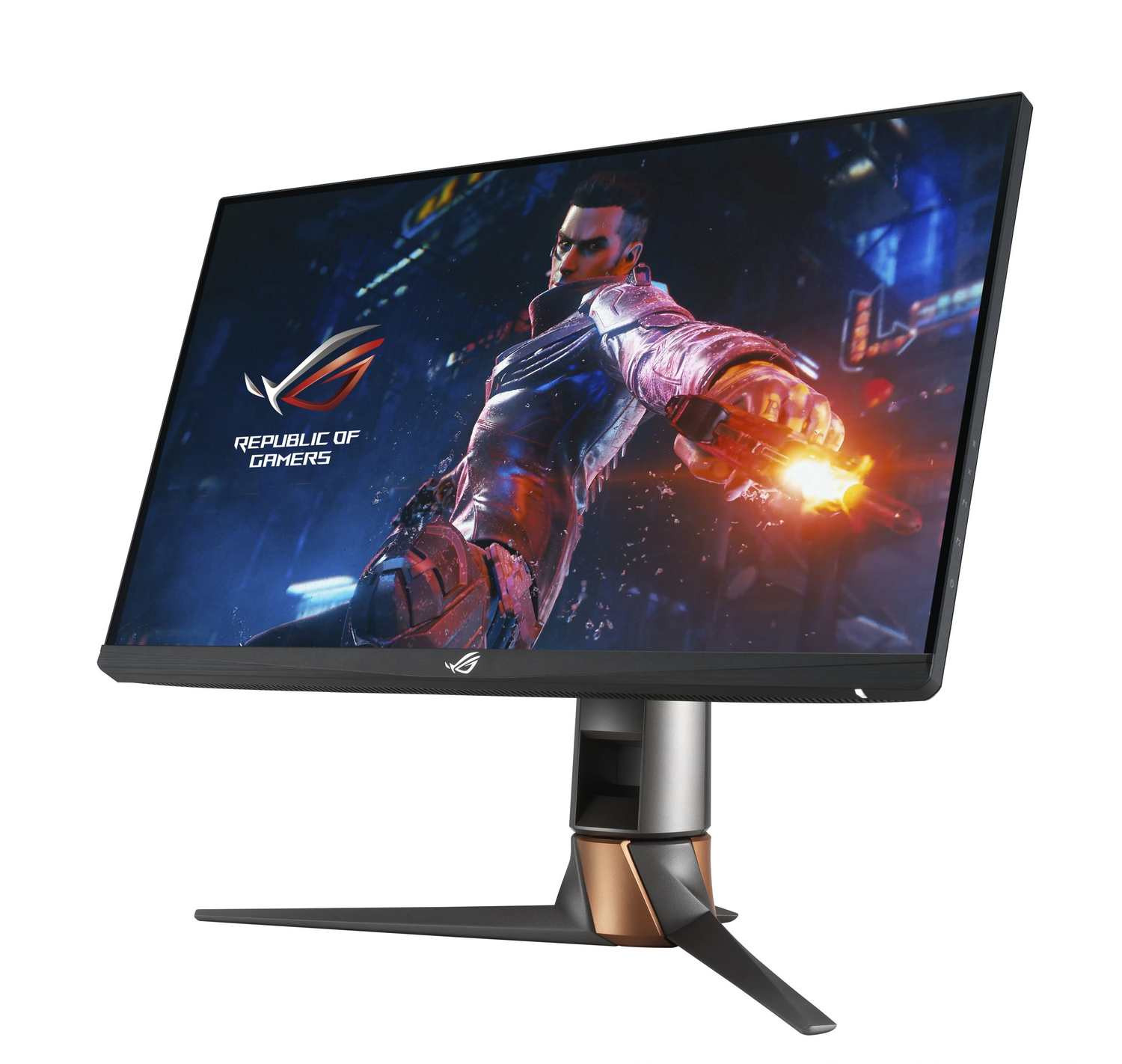



















£692.09*
- Resolution 1920 x 1080 Full HD
- Diagonal 25"
- Panel type IPS
- Refresh Rate 360Hz



Product information
ASUS ROG SWIFT 360Hz PG259QNR eSports NVIDIA® G-SYNC® Gaming Monitor - 24.5 inch FHD (1920 x 1080), NVIDIA Reflex Latency Analyzer, 360 Hz, Fast IPS, 1 ms (GTG), ROG Desk Mount Kit
- 62.23cm (24.5 inch) FHD (1920x1080) Fast IPS gaming monitor with a refresh rate of 360Hz, designed for professional gamers and eSports
- The NVIDIA® G-SYNC™ processor ensures smooth gaming without tearing at refresh rates up to 360Hz
- NVIDIA® Reflex Latency Analyzer offers competitive gamers the ability to accurately measure system latency for the first time.
- ASUS Fast IPS technology enables 1ms response time (GTG) for sharp gaming graphics at high frame rates.
- Includes a ROG table mount that can be attached to the edge of most tabletops.
The EVOLUTION OF ESPORTS
The ROG Swift 360Hz PG259QNR is the perfect gaming monitor for eSports titles and fast-paced action games. This FHD (1920x1080) display features a Fast IPS panel with a refresh rate of up to 360Hz, a 1ms grey-to-grey (GTG) response time and supports NVIDIA Reflex Latency Analyzer, a revolutionary built-in tool for measuring system latency. Also included with the PG259QNR is the ROG Desk Mount Kit, which allows the monitor to be clamped to the edge of just about any flat work surface to create more space for the keyboard and mouse.
The ROG Swift 360Hz PG259QNR is perfect for fast-paced eSports titles like Counter-Strike: Global Offensive, Rainbow Six: Siege, Overwatch and Fortnite. In a world where every millisecond counts, the lightning-fast 360Hz refresh rate makes the difference between winning and losing. The 360Hz refresh rate provides extremely smooth and fast graphics, allowing competitive gamers to better keep their opponents in their sights. At the same time, lower latency ensures that player input is translated to the screen with almost no lag.
ULTRA-RESPONSIVE PERFORMANCE
NVIDIA® G-SYNC® processors deliver incredibly smooth gameplay without tearing at refresh rates of up to 360Hz and extremely low motion blur. NVIDIA G-SYNC monitors are the perfect choice for eSports.
NVIDIA REFLEX MEASURES RESPONSE
When it comes to PC performance for competitive gaming, responsiveness is paramount - how quickly the screen refreshes after a mouse click. The PG259QNR's integrated NVIDIA Reflex Latency Analyzer captures end-to-end system latency and provides an accurate measurement of your PC's performance. Go into battle confident in the knowledge that with a GeForce RTX GPU, the PG259QNR and Chakram Core, your PC will deliver absolute top performance.
FOCUS IS ON WHAT REALLY MATTERS
ROG DESK MOUNT KIT
Included is a convenient mounting bracket that helps save desk space. The mount can be clamped to the edge of just about any flat work surface. The mounting arm of the PG259QNR can then be easily plugged in.
Deflective frame
A special non-reflective coating on the bottom frame reduces annoying light reflections on the screen.
Technical data
| Name | Asus ROG Swift 360Hz PG259QNR 25" IPS Monitor, 1920 x 1080 Full HD, 360Hz, 1ms |
|---|---|
| Article number | 1000024570 |
| GTIN/EAN | 4718017902540 |
| Manufacturer SKU | 90LM05Q3-B01370 |
| Model name | ROG Swift 360Hz PG259QNR |
| Brand | Asus |
| Product Type | Monitor |
| Product Series | Asus PG Series |
| Technology | LCD |
| Panel type | IPS |
| Resolution | 1920 x 1080 Full HD |
| Diagonal | 25" |
| Aspect Ratio | 16:9 |
| Viewing angle - Horizontal | 178° |
| Viewing angle - Vertical | 178° |
| Contrast Ratio | 1,000 :1 |
| Max. Brightness | 400 cd/m² |
| Response time | 1ms |
| Refresh Rate | 360Hz |
| Support - VESA | 100 x 100 |
| Inputs | 1x Displayport , 1x HDMI , 2x USB-A |
| Features | Flicker Free , Nvidia Gsync |
| Product width | 55.7 cm |
| Product height | 33 cm |
| Product depth | 8.8 cm |
| Weight | 3.6 kg |
| Colour | Black |
| EEK Spectrum | A to G |
| Energy efficency class | F |
| Delivery contents | DisplayPort Cable , HDMI Cable , USB cable |
| Condition | New |
| Warranty | 24 Month |
| Warranty type | Bringin service Service and support information |
Product safety
| Person responsible for the EU |
|---|
| Ninepoint GmbH |
| Im Mediapark 8 |
| 50670 Köln |
| Germany |
| info@asus-shop.de |



